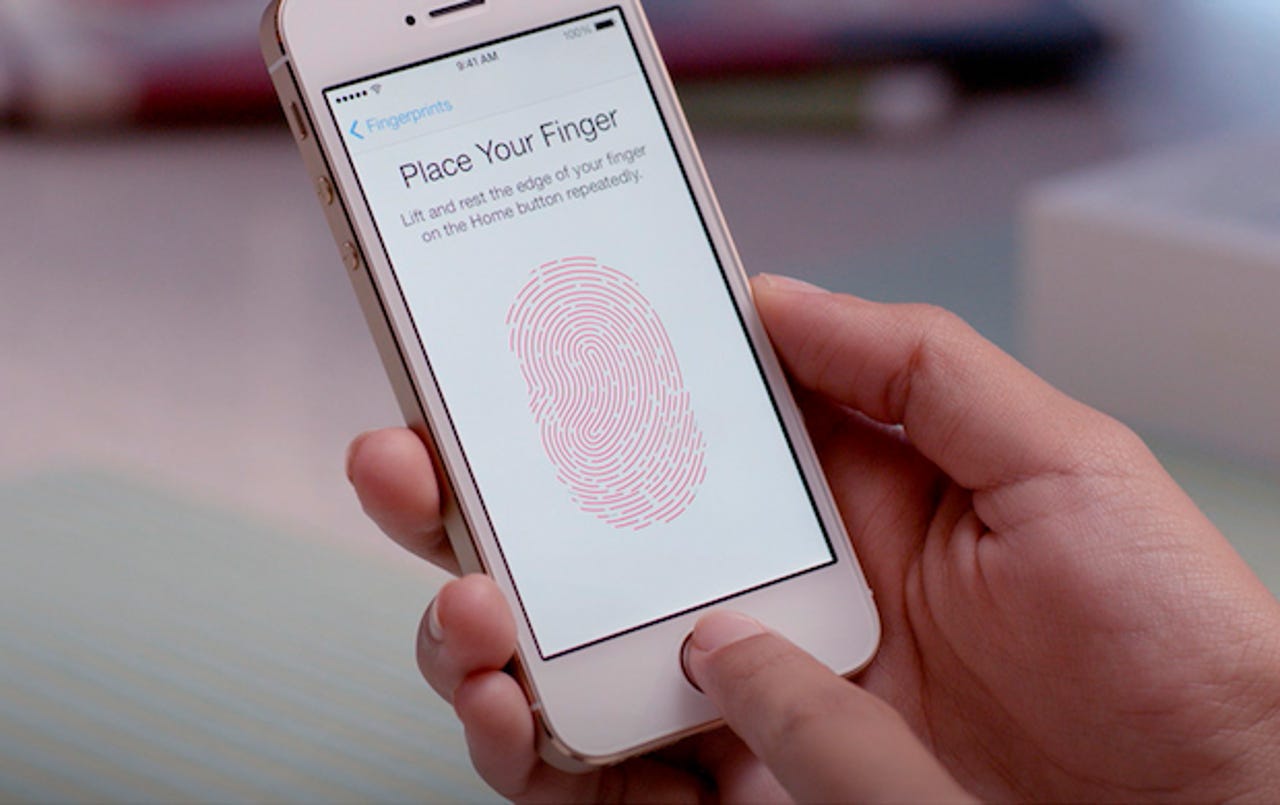Apple reaches for iPhone panic-mode button with new patent


By now, most iPhone users are familiar with TouchID, Apple's fingerprint sensor, for quickly unlocking a device instead of tapping in a passcode.
In a fresh patent application, Apple outlines how its fingerprint sensor can go beyond simply unlocking a device to raising an alarm when a user is in a serious situation.
As it is today, TouchID allows users to enrol up to five fingerprints, which all serve the same purpose of unlocking the device. But Apple's patent application shows how it could be configured so that one fingerprint activates a standard mode of operation while a second fingerprint, enrolled specifically as the panic-mode finger, alters one standard operation of the device.
Where the patent gets interesting is in the possibilities for that single altered mode and the scenarios where it could be applied.
Panic mode is primarily designed to protect both user data and the mobile device from theft and as such when a device is unlocked in panic mode, personal information such as contacts, messages and media remain locked down.
It would also introduce an element of trickery to the device's interface, having the outward appearance of being restored to factory settings.
"The mobile device would appear empty and applications would appear not to have any personal information," says Apple.
But it also envisages scenarios where panic mode could improve the iPhone as a tool for evidence collection and signalling for help during, say, an assault.
"By means of the mobile device's camera, a photo, a series of photos or a video may be captured of the situation or person(s) acting in a threatening manner that led the user to activate the panic mode," the patent explains.
The user could also configure panic mode to "automatically take and transmit photos or videos via the internet to be stored on a remote server" using whatever network connectivity type is available.
"Any stored photos or videos on the remote server can be supplied to a responding police force for assistance in responding to or following up on the panic mode," it notes.
Another option would be for panic mode to include audio recording and relay. As Apple says, in many instances the wrongdoer will be known by the user, so the user could simply say the person's name or continuously record audio, which automatically transmits to a remote server.
It could also be set up so that a service provider forwards the audio or image data to a law-enforcement agency, enabling them to intervene or apprehend a wrongdoer, Apple notes.
Another alternative is for panic mode to make the iPhone act as a beacon that sends a signal to nearby devices, flagging the location of the user and alerting them to the emergency.
"When the user is being mugged or is in an otherwise threatening situation, the mobile device user can put the mobile device into the panic mode, which turns the mobile device into a beacon that gives out its location, while blocking others from gaining access to sensitive information on the mobile device," says Apple.
A further scenario is where a hiker falls and requires assistance. Panic mode could initiate a distress call or act as a beacon to alert emergency responders.
More on the Apple iPhone
- Google brings audible traffic alerts to iPhone Google Maps users
- iOS 9.1: Better, but still broken
- Latest iOS 9.2 beta turns all your Apple devices into phones with AT&T NumberSync
- This iOS app could bring indoor location services in Apple Maps
- One month with the Apple iPhone 6s Plus: Smartphone usage without compromise